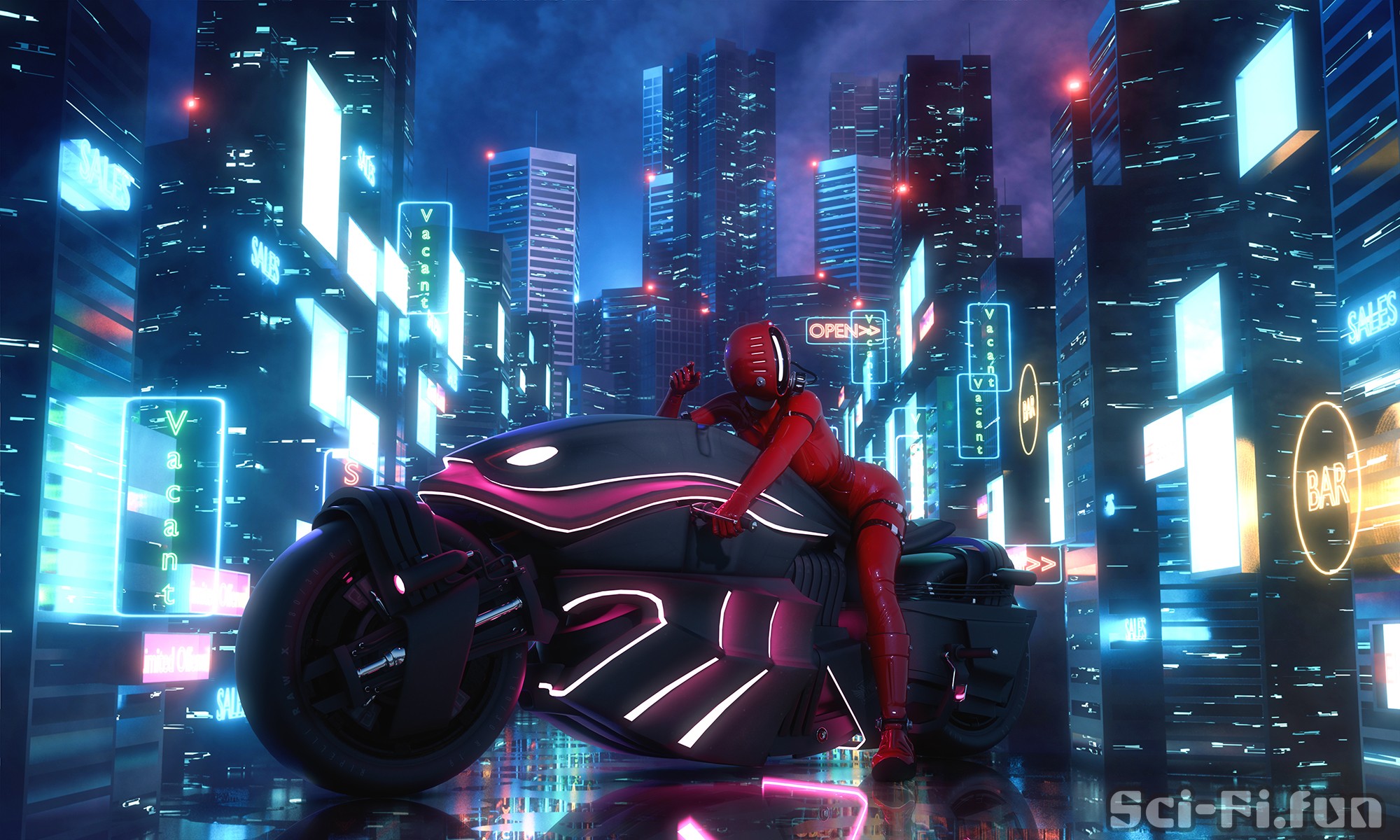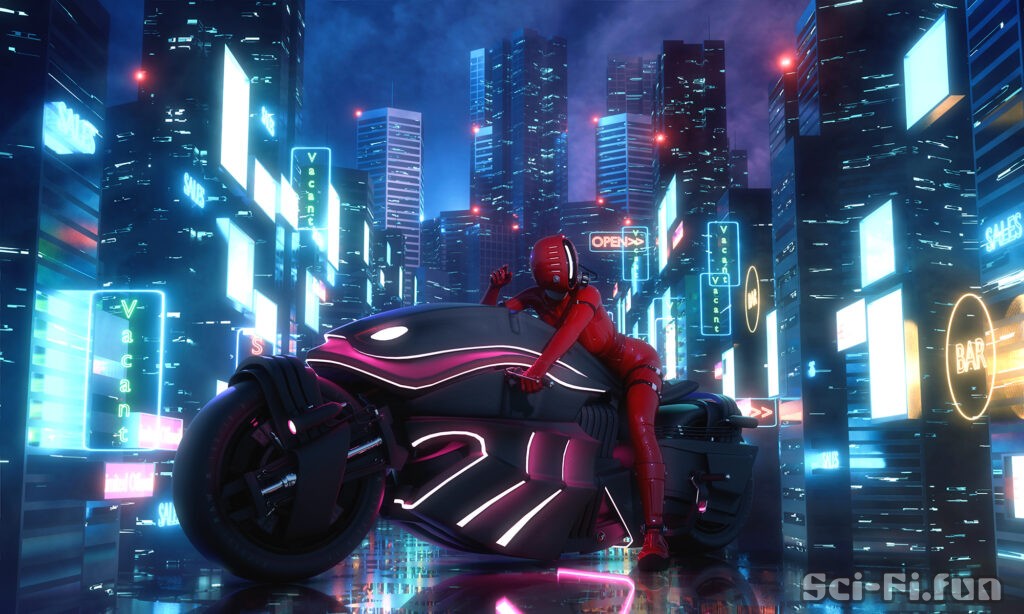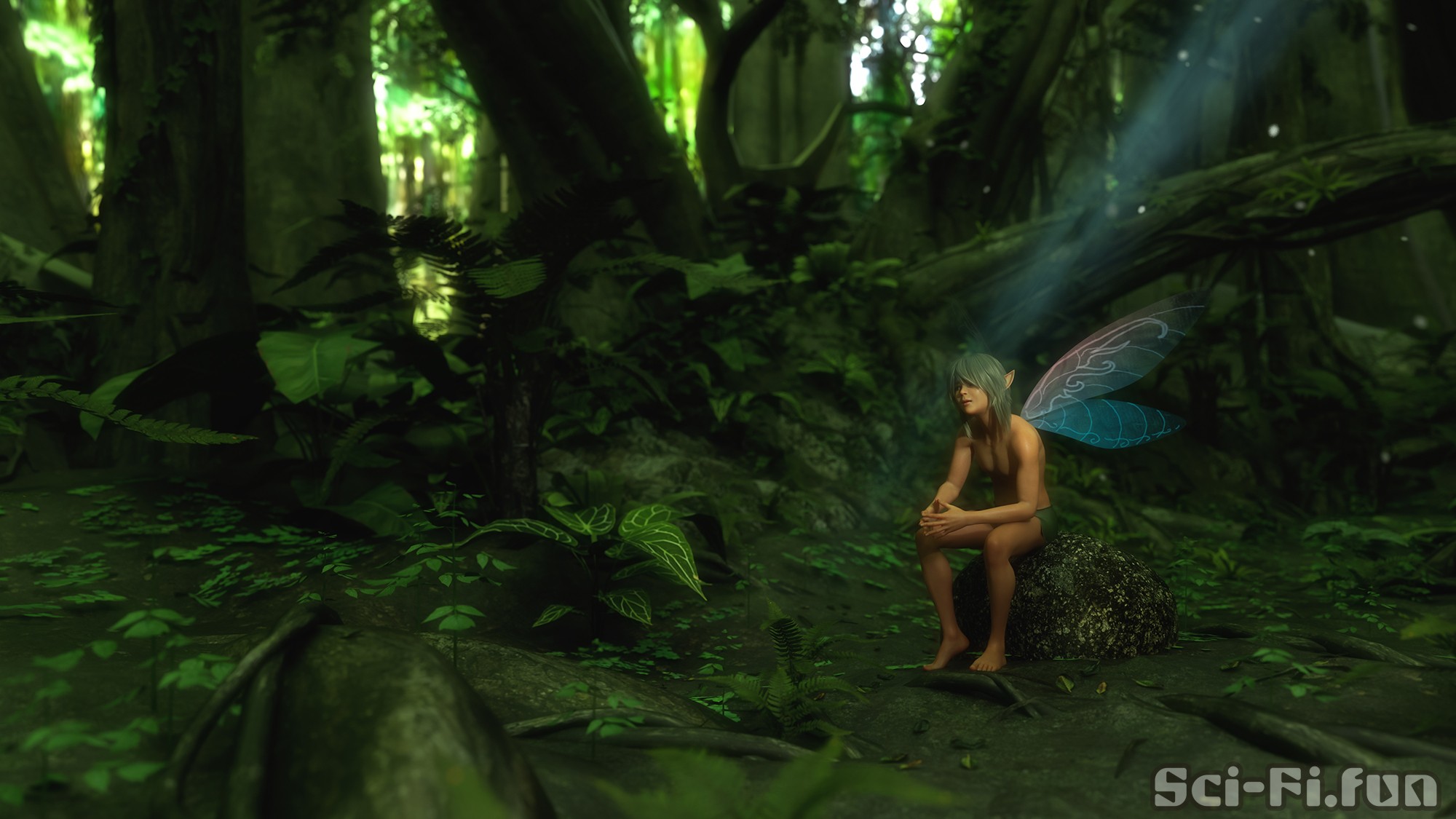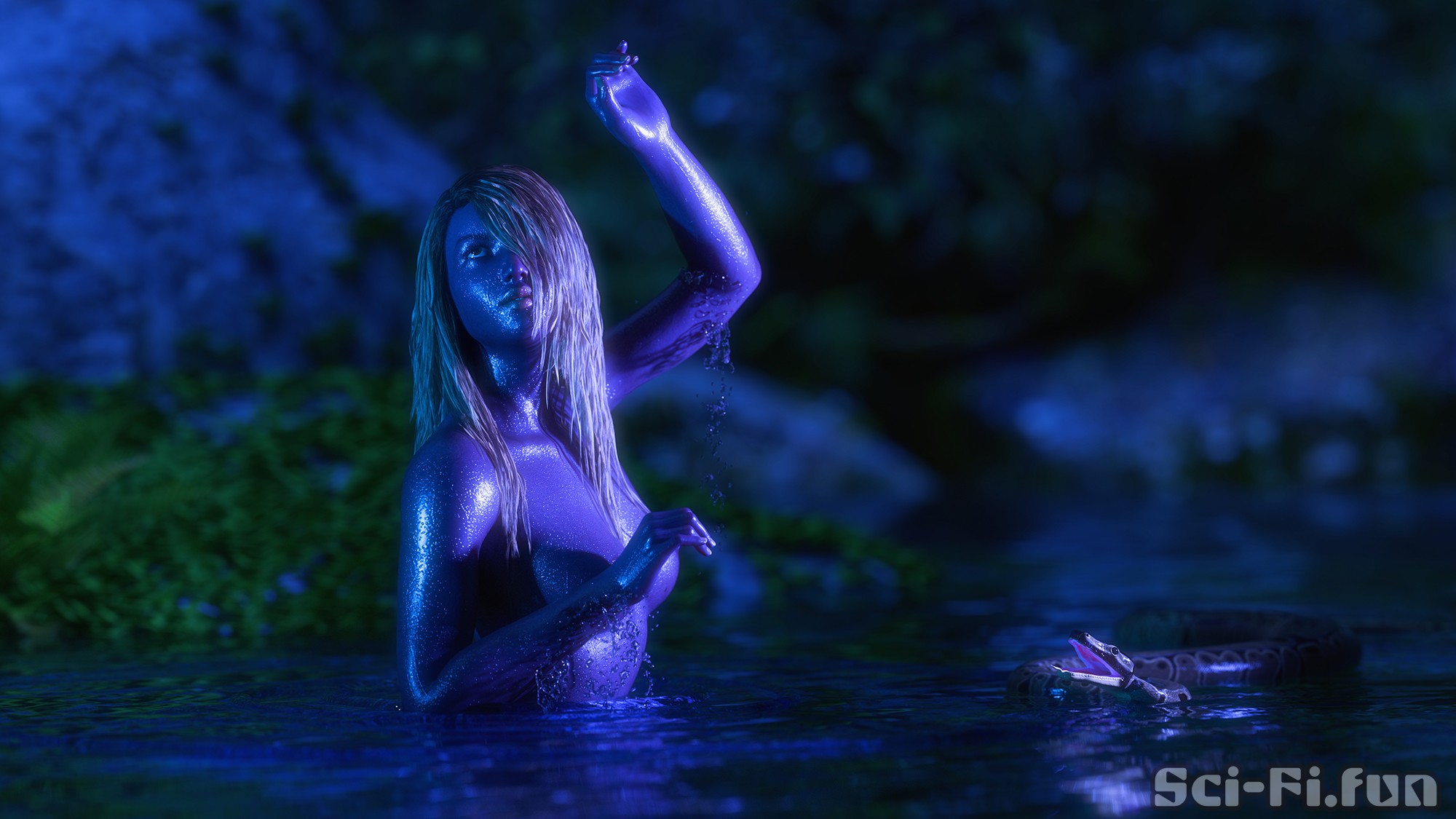電脳墓地に格納されたわたしは、死んでいるのか生きているのか自分でもわからない。
肉体は死んだ。その記憶はあるし、自覚もしている。
でも、わたしはここにいて、自意識はあるしアバターとしての体もある。
「死」とは、「生」とはなんなのか?
古いアニメや映画に、サイバースペースに没入して、あたかも現実世界のように活躍する作品があった。いとも簡単に意識をサイバースペースに投影していたが、現実の技術はそれほど簡単ではなかった。
最大の難関は、意識あるいは心をデータ化して、コンピュータの作り出す世界とシンクロさせることは不可能だったことだ。そもそも意識とはなにか?……という問題に対する明確な答えがなかった。正体不明のものを技術的に作ることはできない。
サイバースペースはおとぎ話だった。
汎用AIについても、同様の問題があった。
膨大なデータを詰め込んで学習させれば、いつかAIは意識を持つと期待されていた。だが、そんなことにはならなかった。意識はデータの蓄積で発生するものではなかったからだ。
賢いAIを作ることはできても、自律したAIにはならない。AIにはもっとも重要なパーツが足りなかったのだ。
それは意識を発生させるパーツだ。
自動車にたくさんのオプションをつけ、車載コンピュータにAIを搭載しても、エンジンがなければ車は走れない。昔の人は、エンジンがなくてもデータを詰め込んでいけば、いつかエンジンが自然発生すると考えていたようなもの。エンジンは2進法ではない。そんな基本的なことに気がつかなかったというわけ。
理想のサイバースペースは壁にぶつかった。
ゴーグル型の端末と、チープなサイバースペースで満足するしかなかった。意識のそのものをサイバースペースに投影するのは、無理難題だと思われた。
技術はときに飛躍的なブレークスルーをすることがある。
停滞していた70年の末に、サイバースペースを革新する技術が登場した。
それが「シナプス模倣システム(Synaptic Mimicry System)」だ。
簡単に説明すると、脳を分子レベルでスキャンして、シナプスの構造を細部に至るまで読み取る。それを3Dプリンタの人工タンパク質で再現する。いわば脳を立体的にコピーする手法だ。
脳の中の意識には、コンピュータでのデータに該当するものがない。SMSは、意識はシナプスの構造自体から発生するホログラム的なものという説に基づいている。人工的にシナプスの構造を作ることができれば、意識の入れ物としての人工脳(Artificial Brain)ができるというわけだ。
人工脳は、ゼリー状の溶液が満たされた人間の脳と同等の大きさの容器の中に、人工シナプスを生成して作られる。シナプス構造は人によって違うため、ある個人の脳スキャンで作られた人工脳は、その個人の複製となる。
SMSを稼働させるには、有機的に生きた状態……つまり、人工シナプスは各種化学物質と酸素を必要とする。
人工脳の利点は、外部のコンピュータと接続するための端子を取り付けるのが容易なことだ。容易といっても、ジャックを挿すようなわけにはいかない。人工シナプスにつながるミクロな神経線は数万本にも及ぶ。それでも本物の脳にケーブルを接続するよりは確実なのだ。
過去の多くの研究のように、動物実験が行われた。猿の脳の複製はうまくいった。しかし、問題が起こった。
オリジナル脳から複製脳に意識を転写すると、オリジナル脳が脳死状態になってしまったのだ。元に戻そうとしても戻せなかった。そこから推察できることは、意識は転写できても複製はできず、しかも不可逆だということだった。
このままでは人間に応用できない。そこで取られた方法が、回復の見込みがない瀕死の患者で実験することだった。
実験は成功し、患者の意識は人工脳の中で意識を取り戻した。
そして、これが電脳墓地の始まりとなった。
実現したサイバースペースは、死者の世界なのだ。昔風にいえば、「あの世」あるいは「天国」ともいえる。
わたしは航空機事故で死んだのだが、病院に運ばれたときにはまだ脳は生きていた。電脳墓地保険の契約をしていたから、救命が無理と判断した医師は、わたしの脳が脳死する前に脳スキャンをするために、人工脳ラボに救急搬送した。
そして、わたしは電脳墓地のサイバースペースで意識を取り戻した。
サイバー・セメタリーには、現実に似せた街が再現されている。この街の住人は、死者とAIが作り出す人工キャラクターだ。両者の区別をするのは難しい。どちらもアバターなのは同じだからだ。
ただし、古い世代の人工脳には問題もある。初期の頃は意識の転写精度がよくなくて、解像度が低かった。そのため復元される意識に荒さが目立ち、記憶の欠落などの障害が発生した。
最近では、この問題の解決策として、「脳量率」略してBQRが導入されている。初期モデルではBQRが30%だったのが、最新型では90%にまで上がった。100%にできないのは、転写時のエラーだとされている。
アバターは好きなように変えられる。そこはゲームと同じ。
わたしは60代のおっさんだったが、アバターは20代の女性に設定した。
電脳バイクに乗り、サイバースペースを走り回っている。
最初の疑問に戻ろう。
わたしは生きているのか、死んでいるのか。
意識の存在が生きていることなら、わたしはサイバースペースで生きている。
生きた肉体が必要なら、わたしは死んでいる。
どっちにせよ、テクノロジーは死後の世界を作り出したのだ。
Stored in cyber-cemetery, I don’t know whether I am dead or alive.
My body is dead. I have the memory of it, and I am aware of it.
But I’m still here, I’m self-aware, and I have a body as an avatar.
What is “death” and what is “live”?
There were old anime and movies where people would immerse themselves in cyberspace, jack-in, and act as if they were in the real world. It was very easy to project your consciousness into cyberspace, but the real world technology was not so easy.
The biggest obstacle was that it was impossible to convert consciousness or mind into data and synchronize it with the world created by computers. What is consciousness in the first place? There was no clear answer to the question. We cannot technically create something that is unidentifiable.
Cyberspace was a fairy tale.
There was a similar problem with general-purpose AI.
It was hoped that by filling it with huge amounts of data and letting it learn, the AI would one day become conscious. However, it did not happen that way. Consciousness does not come from the accumulation of data.
We could make a good AI, but not an independent AI, because it lacked the most important part.
It lacked the most important part: the part that generates consciousness.
You can have a lot of options in a car, and you can have AI in the onboard computer, but without an engine, the car won’t run. It’s as if people used to think that even if there is no engine, if they fill it with data, one day an engine will spontaneously arise. An engine is not a binary system. So they didn’t realize such a basic thing.
The ideal cyberspace had hit a wall.
We had to be satisfied with goggle-shaped terminals and cheap cyberspace. Projecting consciousness itself into cyberspace seemed like an impossible task.
Technology can sometimes make dramatic breakthroughs.
At the end of 70 years of stagnation, a technology emerged that revolutionized cyberspace.
That is the “Synaptic Mimicry System (SMS)”.
Briefly, the brain is scanned at the molecular level to read the structure of the synapses down to the smallest detail. This is then reproduced using artificial proteins from a 3D printer. In other words, it is a method of copying the brain in three dimensions.
SMS is based on the theory that consciousness is a holographic representation of the synaptic structure itself. If we can artificially create the structure of synapses, we can create an artificial brain as a container for consciousness.
An artificial brain is created by generating artificial synapses in a container the size of a human brain filled with a jelly-like solution. Since the synaptic structure differs from person to person, an artificial brain created from a brain scan of an individual is a duplicate of that individual.
In order to run the SMS, it must be organically alive ……, which means that the artificial synapses need various chemicals and oxygen.
The advantage of an artificial brain is that it is easy to install terminals to connect it to an external computer. However, it is not as easy as plugging in a jack. There are tens of thousands of microscopic nerve lines leading to artificial synapses. Still, it is more reliable than connecting a cable to a real brain.
As with many studies in the past, animal experiments were conducted. The replication of the monkey brain worked. However, a problem arose.
When the consciousness was transferred from the original brain to the duplicated brain, the original brain became brain dead. Even if they tried to restore it, they could not. What could be inferred from this was that although consciousness could be transferred, it could not be duplicated, and that it was irreversible.
It is impossible to apply this technology to humans. The method used was to test it on a dying patient with no hope of recovery.
The experiment was a success, and the patient regained consciousness in the artificial brain.
This was the beginning of Cyber Cemetery.
The cyberspace that has been realized is the world of the dead. In the classical sense, it could be called the “afterlife” or “heaven”.
I died in an airplane accident, but my brain was still alive when I was taken to the hospital. I had an insurance contract with the Brain Cemetery, and the doctors decided that they could not save my life, so they rushed me to the Artificial Brain Lab to do a brain scan before my brain died.
Then I regained consciousness in the cyberspace of the Brain Cemetery.
In Cyber Cemetery, a city has been recreated to resemble reality. The inhabitants of this city are the dead and artificial characters created by AI. It is difficult to distinguish between the two. They are both avatars.
However, there are some problems with the older generation of artificial brains. In the early days, the accuracy of consciousness transcription was not good, and the resolution was low. As a result, the reconstructed consciousness was noticeably rough, resulting in memory loss and other problems.
Recently, the Brain Quality Rate, or BQR for short, has been introduced as a solution to this problem. Early models had a BQR of 30%, but the latest models have a BQR of 90%; it is believed that the failure to achieve 100% is due to errors in transcription.
You can change your avatar any way you want. It’s just like a game.
I was an old man in sixties, but I set my avatar as a woman in her twenties.
I ride around cyberspace on my electric bike.
Let’s go back to the first question.
Am I alive or am I dead?
If the existence of consciousness is to be alive, then I am alive in cyberspace.
If I needed a living body, I would be dead.
Either way, technology has created an afterlife.




